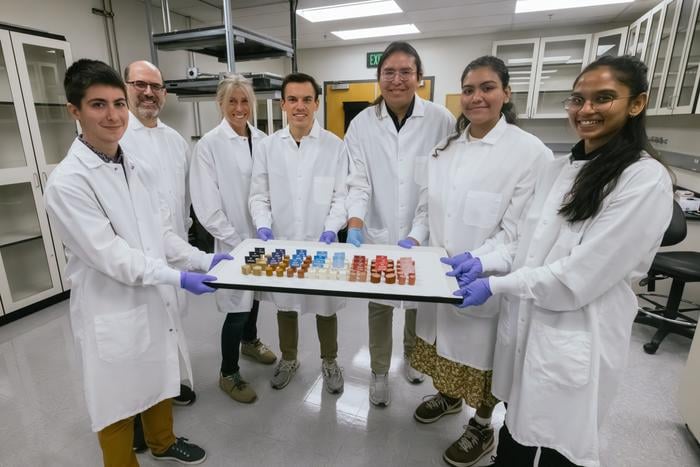Meat lovers and environmental advocates rarely see eye-to-eye, but a Stanford engineering team might be creating a path forward for both. By pioneering new methods to analyze food texture using mechanical testing and machine learning, researchers are bringing plant-based meats closer to mimicking their animal counterparts in taste and texture. This innovation could reshape menus and dining habits worldwide.
Journal: npj Science of Food, November 15, 2024, DOI: 10.1038/s41538-024-00330-6 | Reading time: 6 minutes
A Mechanical Take on Texture
The challenge of convincing meat enthusiasts to try plant-based alternatives lies largely in replicating the sensory experience of animal meat. Stanford’s team, led by Professor Ellen Kuhl of the Department of Mechanical Engineering, has devised a novel approach. “We were surprised to find that today’s plant-based products can reproduce the whole texture spectrum of animal meats,” Kuhl shared. This breakthrough stems from a three-dimensional mechanical food test developed during research projects led by graduate student Skyler St. Pierre.
The team tested eight products: animal and plant-based versions of hot dogs, sausages, and turkey, alongside firm and extra-firm tofu. Each was subjected to tension, compression, and shear tests—movements mimicking chewing. “These three loading modes represent what you do when you chew,” explained Kuhl. The data was then analyzed using a custom neural network to generate equations that quantify texture properties.
Insights for a More Sustainable Future
Industrial animal agriculture is a leading contributor to climate change, habitat destruction, and antibiotic resistance. Plant-based alternatives offer significant environmental advantages, producing half the greenhouse gas emissions of animal meats on average. Yet, only about a third of Americans are highly inclined to buy plant-based options. The researchers believe that improving texture fidelity could drive broader adoption.
Their findings were promising: plant-based sausages and hot dogs closely matched their animal counterparts in stiffness and mechanical behavior, as confirmed by human testers in a complementary sensory survey. This alignment suggests that machines can reliably evaluate texture, enabling faster and more standardized development of plant-based recipes.
The team’s work isn’t just about better burgers; it’s about collaboration. By making their data publicly available, they hope to catalyze innovation in food science. “Without sharing information and working together, how are we going to come up with a steak mimic together?” St. Pierre asked.
Glossary
- Plant-Based Meat: Food products made from plants, designed to replicate the taste and texture of animal meat.
- Mechanical Testing: A method of assessing materials by applying forces like tension, compression, and shear.
- Neural Network: A type of artificial intelligence model inspired by the human brain, used to analyze complex data.
- Stiffness: The resistance of a material to deformation under applied force.
- Sensory Survey: A study where participants evaluate food characteristics like texture and taste.
Interactive Quiz
1. What was the primary focus of the Stanford study?
Developing new methods to analyze and replicate the texture of plant-based meats.
2. How do plant-based meats compare environmentally to animal meats?
On average, they have half the greenhouse gas emissions of animal meats.
3. Which mechanical tests were used to simulate chewing?
Tension, compression, and shear tests.
4. Why is sharing data important for plant-based meat development?
It fosters collaboration and accelerates innovation in food science.
Enjoy this story? Subscribe to our newsletter at scienceblog.substack.com


